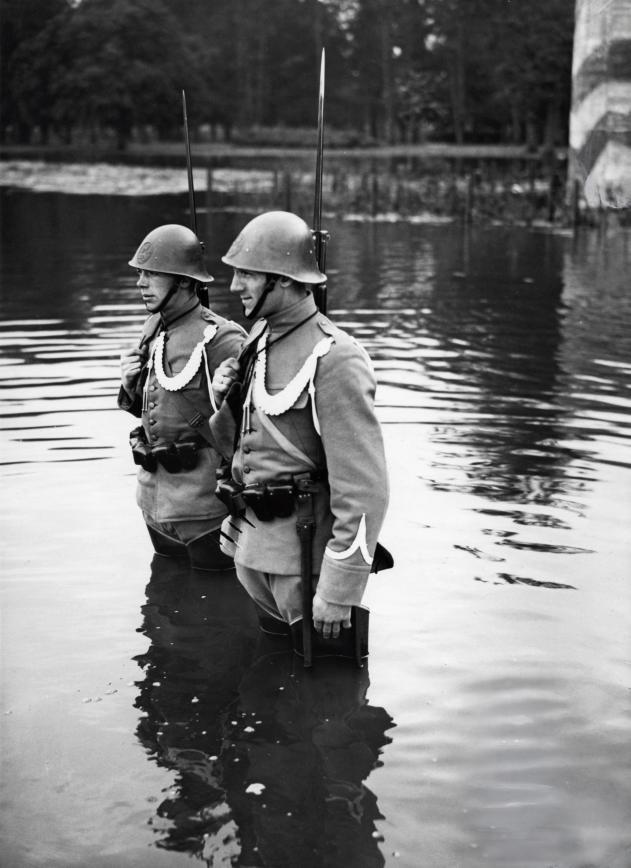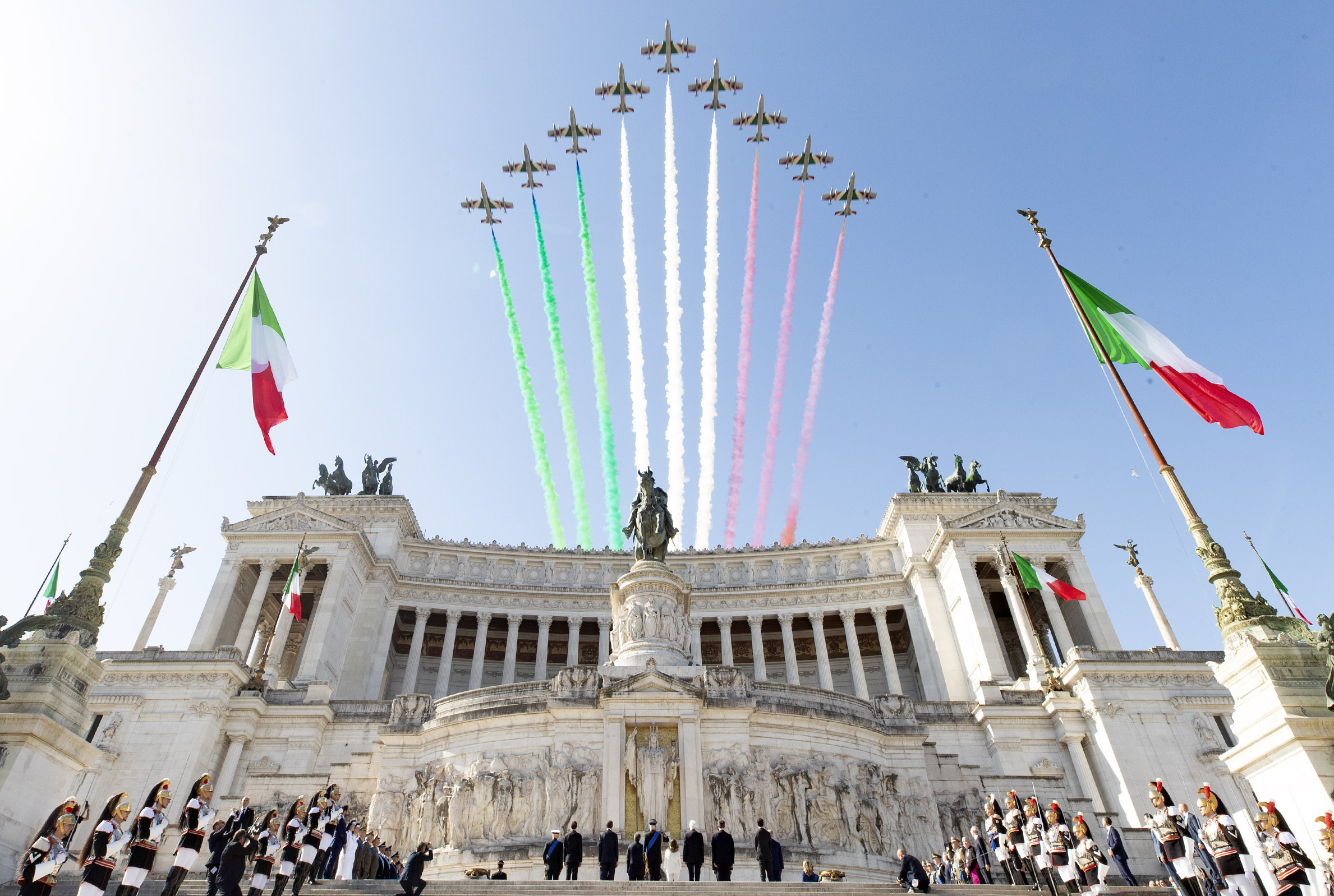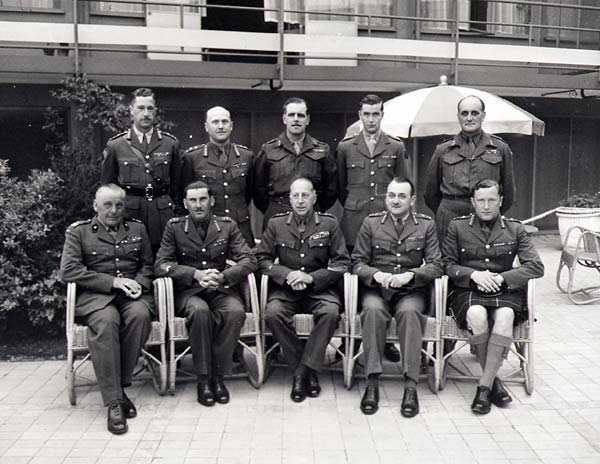|
Liberation Day (The Netherlands)
Liberation Day ( ) is a public holiday in the Netherlands to mark the end of the Nazi occupation of the country during the Second World War. It follows the Remembrance of the Dead (''Dodenherdenking'') on 4 May. The Netherlands were liberated by Canadian forces, British infantry divisions, the British I Corps, the 1st Polish Armoured Division, American, Belgian, Dutch and Czechoslovak troops. Parts of the country, in particular the south-east, were liberated by the British Second Army which included American and Polish airborne forces (see Operation Market Garden) and French airbornes (see Operation Amherst). On 5 May 1945, at Hotel de Wereld in Wageningen, I Canadian Corps commander Lieutenant-General Charles Foulkes and '' Oberbefehlshaber Niederlande'' commander-in-chief ''Generaloberst'' Johannes Blaskowitz reached an agreement on the capitulation of all German forces in the Netherlands. The capitulation document was signed the next day in the auditorium of ... [...More Info...] [...Related Items...] OR: [Wikipedia] [Google] [Baidu] |
Battle Of The Netherlands
The German invasion of the Netherlands (), otherwise known as the Battle of the Netherlands (), was a military campaign, part of Battle of France, Case Yellow (), the Nazi German invasion of the Low Countries (Belgium, Luxembourg, and the Netherlands) and French Third Republic, France during World War II. The battle lasted from 10 May 1940 until the surrender of the main Dutch forces on 14 May. Dutch troops in the province of Zeeland, Zealand continued to resist the Wehrmacht until 17 May, when Germany completed its occupation of the whole country. The invasion of the Netherlands saw some of the earliest mass paratroop drops, to occupy tactical points and assist the advance of ground troops. The German Luftwaffe used paratroopers in the capture of several airfields in the vicinity of Rotterdam and The Hague, helping to quickly overrun the country and immobilise Dutch forces. After the devastating German bombing of Rotterdam, Nazi bombing of Rotterdam by the Luftwaffe on 14 May ... [...More Info...] [...Related Items...] OR: [Wikipedia] [Google] [Baidu] |
Public Holiday
A public holiday, national holiday, federal holiday, statutory holiday, bank holiday or legal holiday is a holiday generally established by law and is usually a non-working day during the year. Types Civic holiday A ''civic holiday'', also known as a ''civil holiday'' or ''work holiday'', is a day that is legally recognized and celebrated as a holiday in a particular sovereign state or jurisdictional subdivision of such, e.g., a state or a province. It is usually a day that the legislature, parliament, congress or Monarch, sovereign has declared by statute, edict or decree as a non-working day when the official arms of government such as the court, court system are closed. In federation, federal states there may also be different holidays for the constituent states or provinces, as in the United States, where holidays that were established by the federal government are called ''federal holidays''. Such days may or may not be counted in calculating the statute of limitation ... [...More Info...] [...Related Items...] OR: [Wikipedia] [Google] [Baidu] |
Wageningen University
Wageningen University & Research (also known as WUR) is a public university, public research university in Wageningen, Netherlands, specializing in life sciences with a focus on agriculture, technical and engineering subjects. It is a globally important center for life sciences and agricultural research. It is located in a region of the Netherlands known as the Food Valley. Wageningen University and Research is a holding comprising consists of Wageningen University and the (former) agricultural Research institutes of the Ministry of Agriculture, Nature and Food Quality (Netherlands), Dutch Ministry of Agriculture. Wageningen University, is a research university which grants degrees at the BSc, MSc and PhD level in life and social sciences. It focuses its research on scientific, societal and technological problems in the field of life sciences and natural resources. It is widely known for its agriculture, forestry, and environmental studies programs. The university has about 12,00 ... [...More Info...] [...Related Items...] OR: [Wikipedia] [Google] [Baidu] |
Capitulation (surrender)
Capitulation (, a little head or division; ''capitulare'', to treat upon terms) is an agreement in time of war for the surrender (military), surrender to a hostile armed force of a particular body of troops, a town or a territory. It is an ordinary incident of war, and therefore no previous instructions from the captors' government are required before finally settling the conditions of capitulation. The most usual of such conditions are freedom of religion and security of private property on one hand, and a promise not to bear arms within a certain period on the other. Such agreements may be rashly concluded with an inferior officer, on whose authority the enemy are not, in the actual position of the war, entitled to place reliance. When an agreement is made by an officer who has not the proper authority or who has exceeded the limits of his authority, it is termed a "sponsion", and, to be binding, must be confirmed by express or tacit ratification. Article 35 of the Hague ... [...More Info...] [...Related Items...] OR: [Wikipedia] [Google] [Baidu] |
Johannes Blaskowitz
Johannes Albrecht Blaskowitz (10 July 1883 – 5 February 1948) was a German ''Generaloberst'' during World War II. After joining the Imperial German Army in 1901, Blaskowitz served throughout World War I, where he earned the Iron Cross for bravery. During WWII, Blaskowitz led the 8th Army during the Invasion of Poland and was the Commander in Chief of Occupied Poland from 1939 to 1940. During the war, he was awarded the Knight's Cross of the Iron Cross with Oak Leaves and Swords. Blaskowitz wrote several memoranda to the German high command objecting to the criminal conduct of the Einsatzgruppen on the Eastern Front, and he handed out death sentences to SS members for crimes against Polish civilians. Based upon these actions against the SS, Adolf Hitler personally limited Blaskowitz's future advancement. He commanded Army Group G during the Allied invasion of Southern France and Operation Nordwind, the last major German offensive of World War II on the Western Front. Blasko ... [...More Info...] [...Related Items...] OR: [Wikipedia] [Google] [Baidu] |
Generaloberst
A ("colonel general") was the second-highest general officer rank in the German '' Reichswehr'' and ''Wehrmacht'', the Austro-Hungarian Common Army, the East German National People's Army and in their respective police services. The rank was equal to a four-star full general but below a '' Generalfeldmarschall''. The rank was equivalent to a '' Generaladmiral'' in the ''Kriegsmarine'' until 1945 or to a '' Flottenadmiral'' in the '' Volksmarine'' until 1990. It was the highest ordinary military rank and the highest military rank awarded in peacetime; the higher rank of general field marshal was awarded only in wartime by the head of state. In general, a ''Generaloberst'' had the same privileges as a general field marshal. A literal translation of ''Generaloberst'' would be "uppermost general", but it is often translated as "colonel-general" by analogy to ''Oberst'', "colonel", such as in countries in which the rank was adopted like Russia (). "Oberst" derives from the su ... [...More Info...] [...Related Items...] OR: [Wikipedia] [Google] [Baidu] |
25th Army (Wehrmacht)
The 25th Army () was a World War II field army of the German Army. It had the highest ordinal number of any of the numbered German armies. History The 25th Army was formed on 10 November 1944 in the Netherlands, from the staffs of the Armed Forces Commander of the Netherlands and '' Armeeabteilung Kleffel'' (previously known as "Narva Task Force"). The designation as "army" was a deception measure for most of the command's existence, as it did not command more than three divisions until April 1945, during the final days of its existence. The 25th Army held the northernmost position of the Nazi German front line of the Western Front for less than six months in late 1944 and early 1945, with its western flank anchored on the North Sea and its eastern flank adjoining the 1st Parachute Army. Defending the western Netherlands along the Meuse The Meuse or Maas is a major European river, rising in France and flowing through Belgium and the Netherlands before draining into the N ... [...More Info...] [...Related Items...] OR: [Wikipedia] [Google] [Baidu] |
Charles Foulkes (Canadian Army Officer)
General Charles Foulkes, (3 January 1903 – 12 September 1969) was a Canadian soldier, and an officer of The Royal Canadian Regiment. Military career One of eight children, Foulkes was born in Stockton-on-Tees, England, on 3 January 1903. His family moved to Canada, eventually settling at 230 Hill Street in London, Ontario. He completed his secondary school education at the London Collegiate Institute (now Central Secondary School) before going to the University of Western Ontario. He joined the Canadian Militia in 1926. In 1937 he attended the Staff College in Camberley, England. His report concluded that he was, "Sound and competent, and possessed of drive and determination." At the outbreak of the Second World War in September 1939, Foulkes was serving as a major with the 3rd Canadian Infantry Brigade of the 1st Canadian Infantry Division. He went on to be a General Staff Officer with 3rd Canadian Infantry Division. After serving as the 3rd Brigade's commander from Au ... [...More Info...] [...Related Items...] OR: [Wikipedia] [Google] [Baidu] |
Lieutenant-general (Canada)
Lieutenant-general (LGen; ) is a Canadian Armed Forces ranks and insignia, Canadian Forces rank used by Officer (armed forces), commissioned officers of the Canadian Army or Royal Canadian Air Force. Vice-Admiral (Canada), Vice-admiral is the equivalent rank in the Royal Canadian Navy. A lieutenant-general is a general officer, senior to a major general or rear-admiral, and junior to a General (Canada), general or admiral. Prior to the Unification of the Canadian Armed Forces, 1968 unification of the Canadian Forces, Royal Canadian Air Force officers held the equivalent rank of air marshal. Insignia The rank insignia for a lieutenant-general in the Royal Canadian Air Force is a wide braid below two narrow braid on the cuff, as well as three silver maple leaves, beneath crossed sword and baton, all surmounted by St Edward's Crown, St. Edward's Crown, worn on the shoulder straps of the service dress tunic. In the Canadian Army, the rank insignia is a wide braid on the cuff, as well ... [...More Info...] [...Related Items...] OR: [Wikipedia] [Google] [Baidu] |
I Canadian Corps
I Canadian Corps was one of the two corps fielded by the Canadian Army during the Second World War. History From December 24, 1940, until the formation of the First Canadian Army in April 1942, there was a single unnumbered Canadian Corps. I Canadian Corps became operational in Italy in November 1943 when the 5th Canadian (Armoured) Division joined the 1st Canadian Infantry Division, which had been assigned to the British Eighth Army immediately prior to the Allied invasion of Sicily in July 1943. I Canadian Corps was commanded successively by Lieutenant-General Harry Crerar (April 6, 1942, to March 19, 1944), Lieutenant-General Eedson Burns (March 20 to November 5, 1944), and Lieutenant-General Charles Foulkes (November 10, 1944, to July 17, 1945). However, the 1st Canadian Infantry Division took part in the Italian Campaign, participating in the Moro River Campaign and the Battle of Ortona in December 1943 as part of British V Corps and it was not until the fourth Batt ... [...More Info...] [...Related Items...] OR: [Wikipedia] [Google] [Baidu] |






